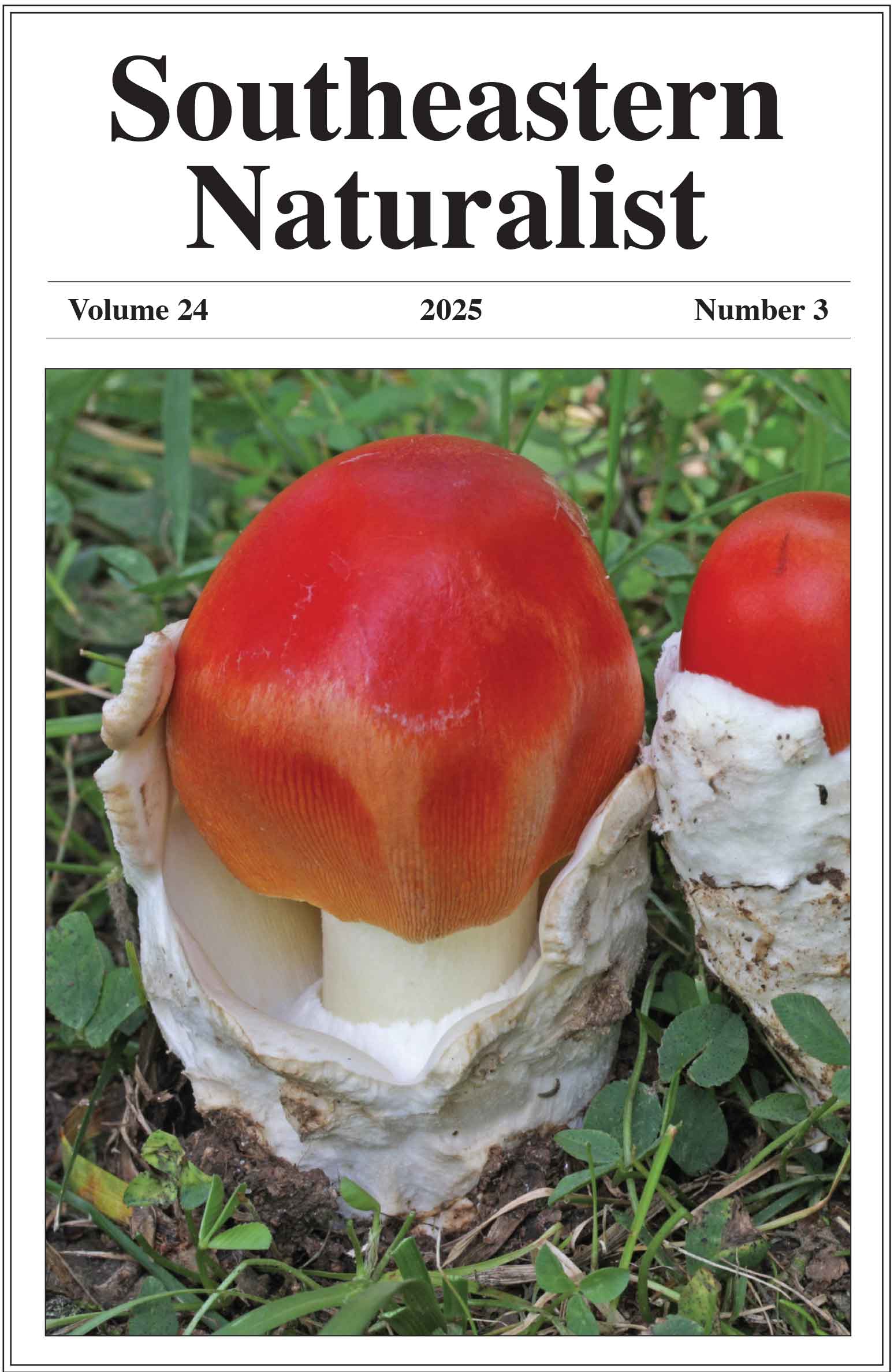Diel Activity Relationships of Sympatric White-tailed Deer, Black Bear, and Wild Pig Populations in the Southern Appalachian Mountains of Georgia
Adam C. Edge1,*, Cheyenne J. Yates2, Jacalyn P. Rosenberger3, Andrew R. Little4, Charlie H. Killmaster5, Kristina L. Johannsen5, David A. Osborn5, Karl V. Miller2, and Gino J. D’Angelo2
1Wildlife and Forestry Division, Tennessee Wildlife Resources Agency, Nashville, TN 37211. 2US Geological Survey, Cooperative Fishery Research Unit, Tennessee Tech University, 1100 N. Dixie Avenue, Box 5114, Cookeville, TN 38505. 3Virginia Department of Wildlife Resources, Marion, VA 24354. 4School of Natural Resources, University of Nebraska, Lincoln, NE 68583. 5Game Management Section, Wildlife Resources Division, Georgia Department of Natural Resources, Social Circle, GA 30025. *Corresponding author.
Southeastern Naturalist, Volume 24, Issue 1 (2025): 70–82
First published early online: 30 March 2025
Abstract
Odocoileus virginianus (White-tailed Deer, hereafter referred to as Deer) populations in the southern Appalachian Mountains of Georgia have declined substantially during the past several decades. Simultaneously, Ursus americanus (American Black Bear, hereafter referred to as Bear) and Sus scrofa (Wild Pig) populations have increased, potentially exacerbating resource competition and influencing interspecific activities. Acorn mast produced by Quercus spp. (oaks) is a particularly important resource for wildlife in this mountainous region because alternative forage is limited and lacking quality nutrition during dormant months. Our objectives were to document diel activity relationships of Deer, Bears, and Wild Pigs and temporal activity overlap during the period of acorn availability from August to December of 2018 and 2019 to assess possible evidence of competition. We used 64 trail cameras across a 1600-ha grid to detect interspecific temporal activity on the Blue Ridge Wildlife Management Area in Georgia. Subsequently, we estimated coefficients of activity overlap between all pairwise species combinations. Deer and Wild Pigs were crepuscular in both years, with a higher degree of overlap in 2018 (∆1 = 0.882) than 2019 (∆1 = 0.805). Bear detections were primarily diurnal in 2018, resulting in lower overlap with Deer (∆1 = 0.739) and Wild Pigs (∆1 = 0.712). However, Bear activity was mostly crepuscular in 2019 with increased overlap among Deer (∆1 = 0.820) and Wild Pigs (∆1 = 0.839). Competitive interactions between these species did not appear to be expressed by temporal activity shifts. However, the potential for scramble competition to acquire mast remains highly viable and should be examined at finer spatio-temporal scales.
![]() Download Full-text pdf (Accessible only to subscribers. To subscribe click here.)
Download Full-text pdf (Accessible only to subscribers. To subscribe click here.)
Access Journal Content
Open access browsing of table of contents and abstract pages. Full text pdfs available for download for subscribers.
Issue-in-Progress: Vol. 24( 4) ... early view
Check out SENA's latest Monograph and current Special Issue in progress:













 The Southeastern Naturalist is a peer-reviewed journal that covers all aspects of natural history within the southeastern United States. We welcome research articles, summary review papers, and observational notes.
The Southeastern Naturalist is a peer-reviewed journal that covers all aspects of natural history within the southeastern United States. We welcome research articles, summary review papers, and observational notes.